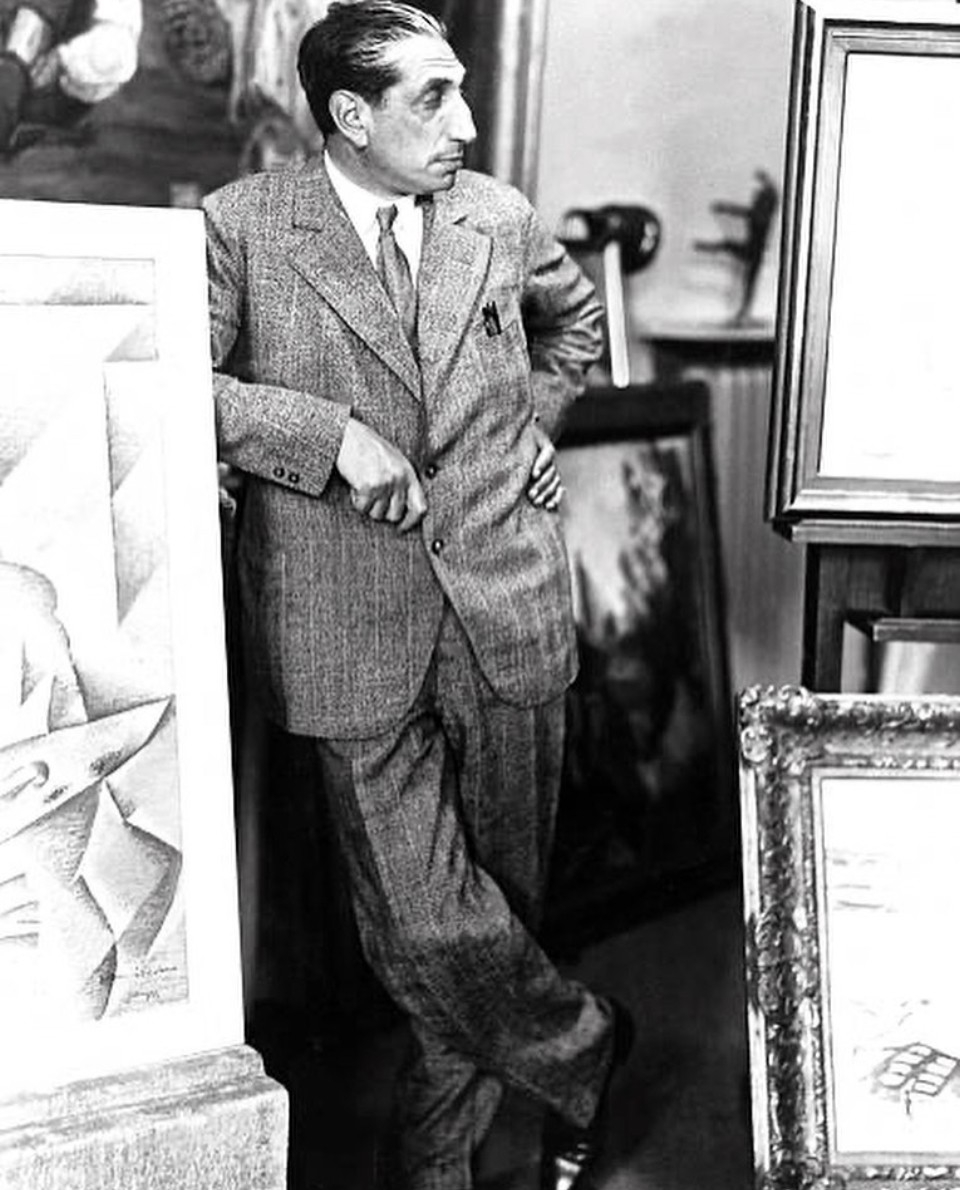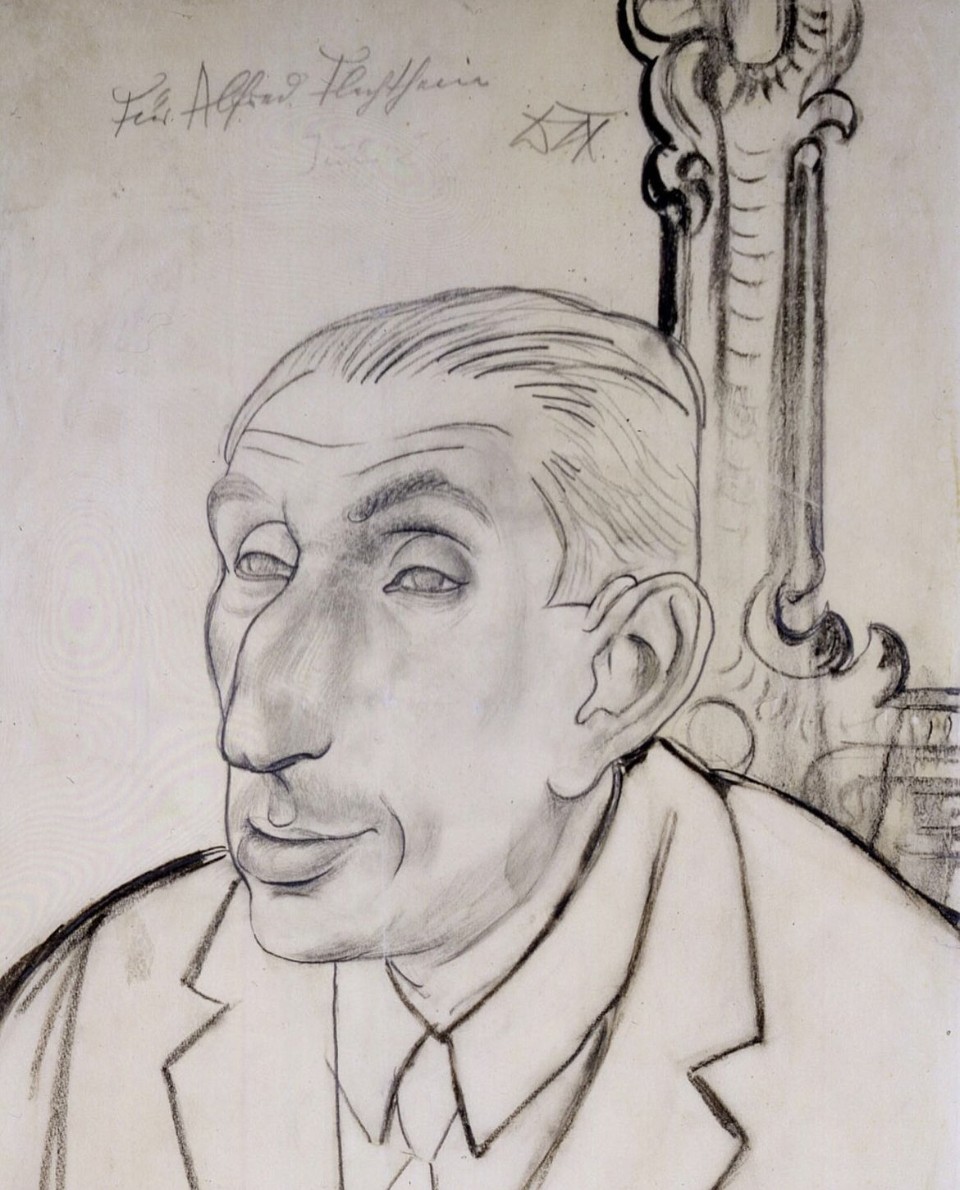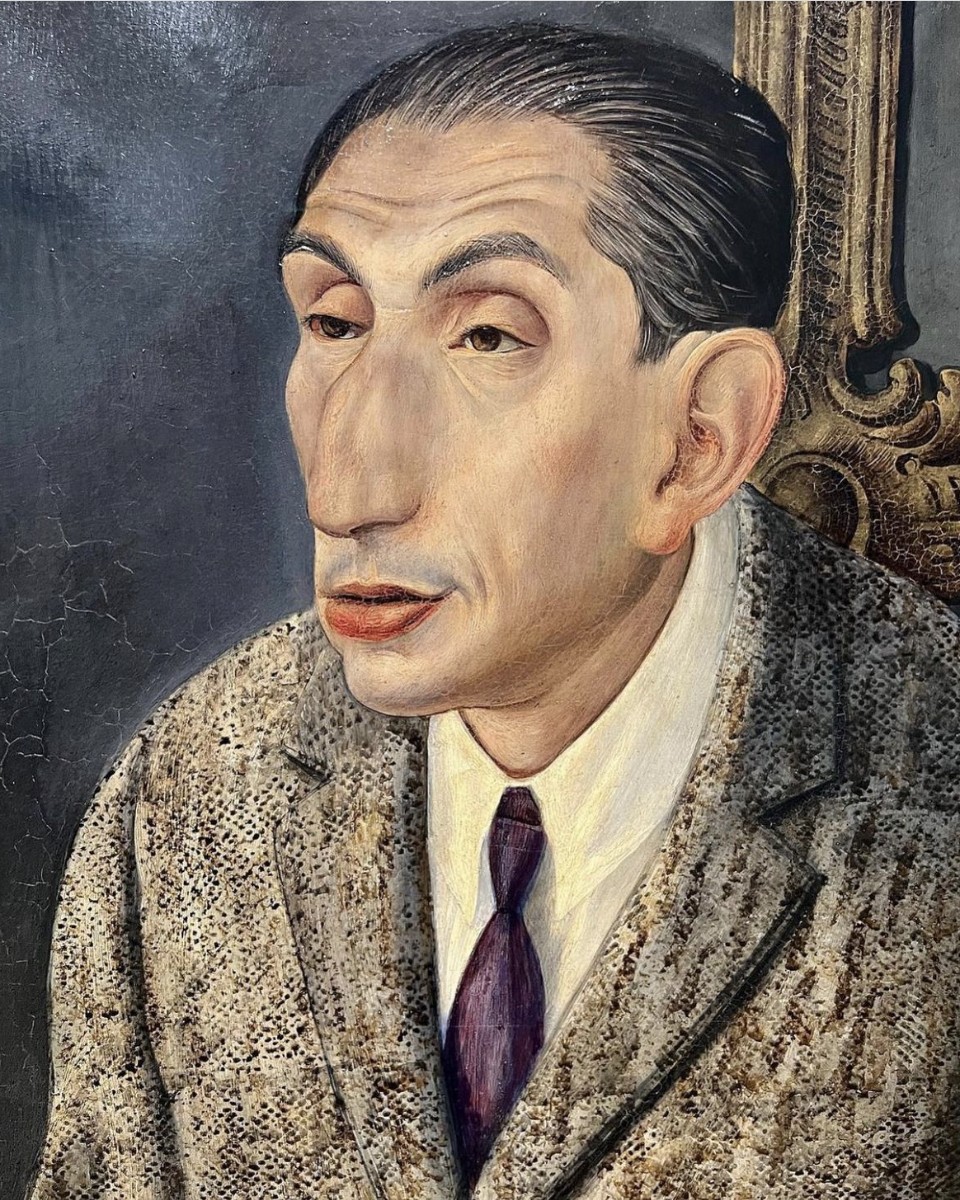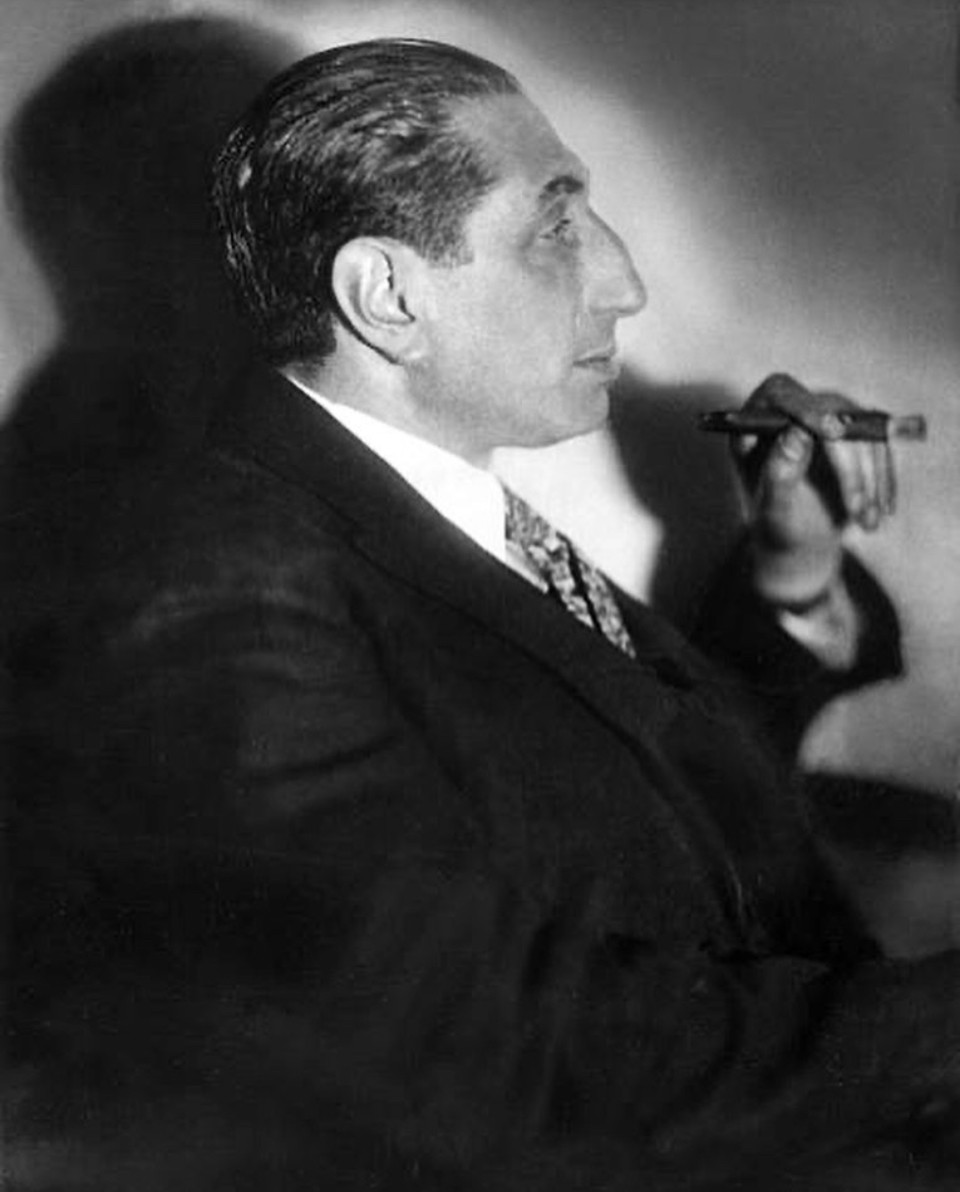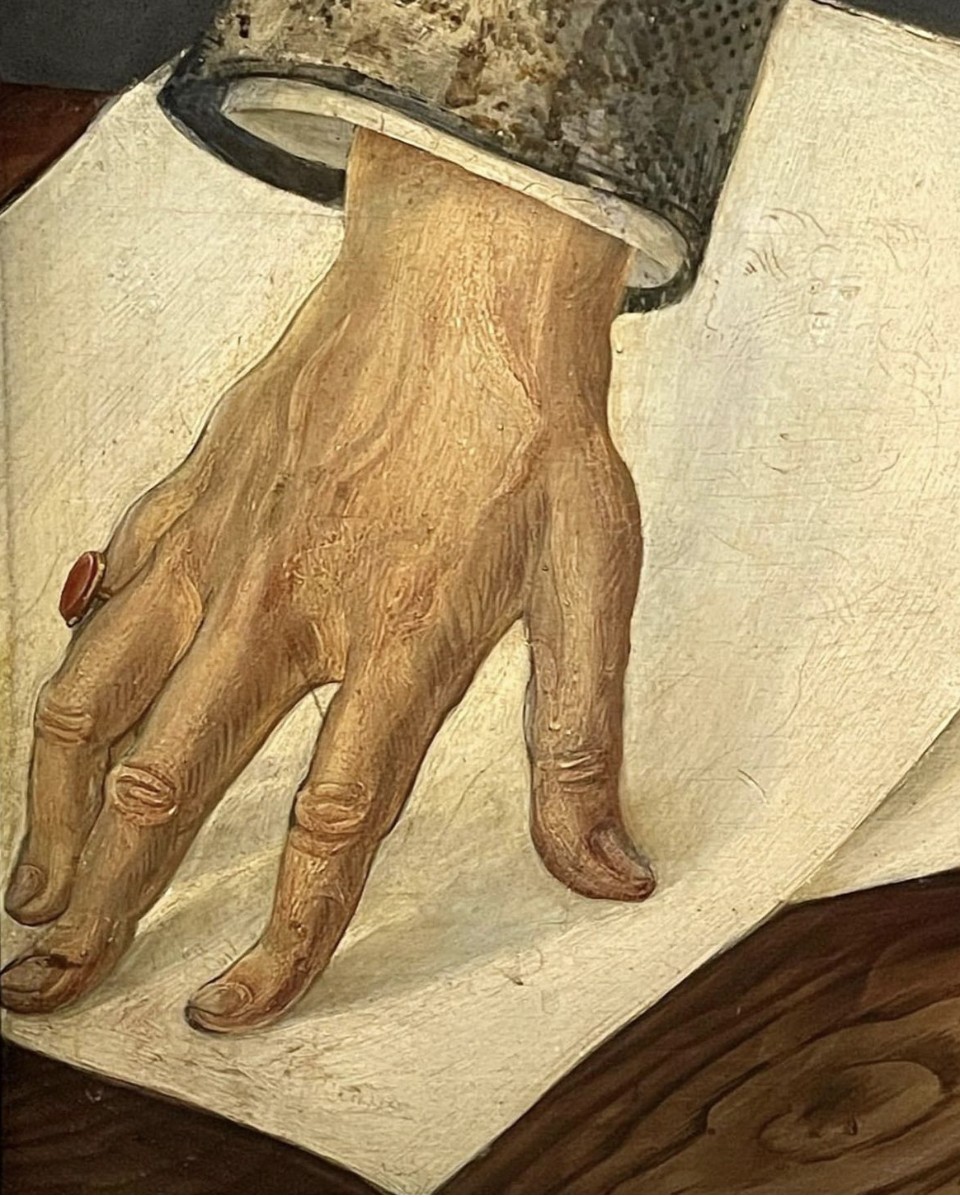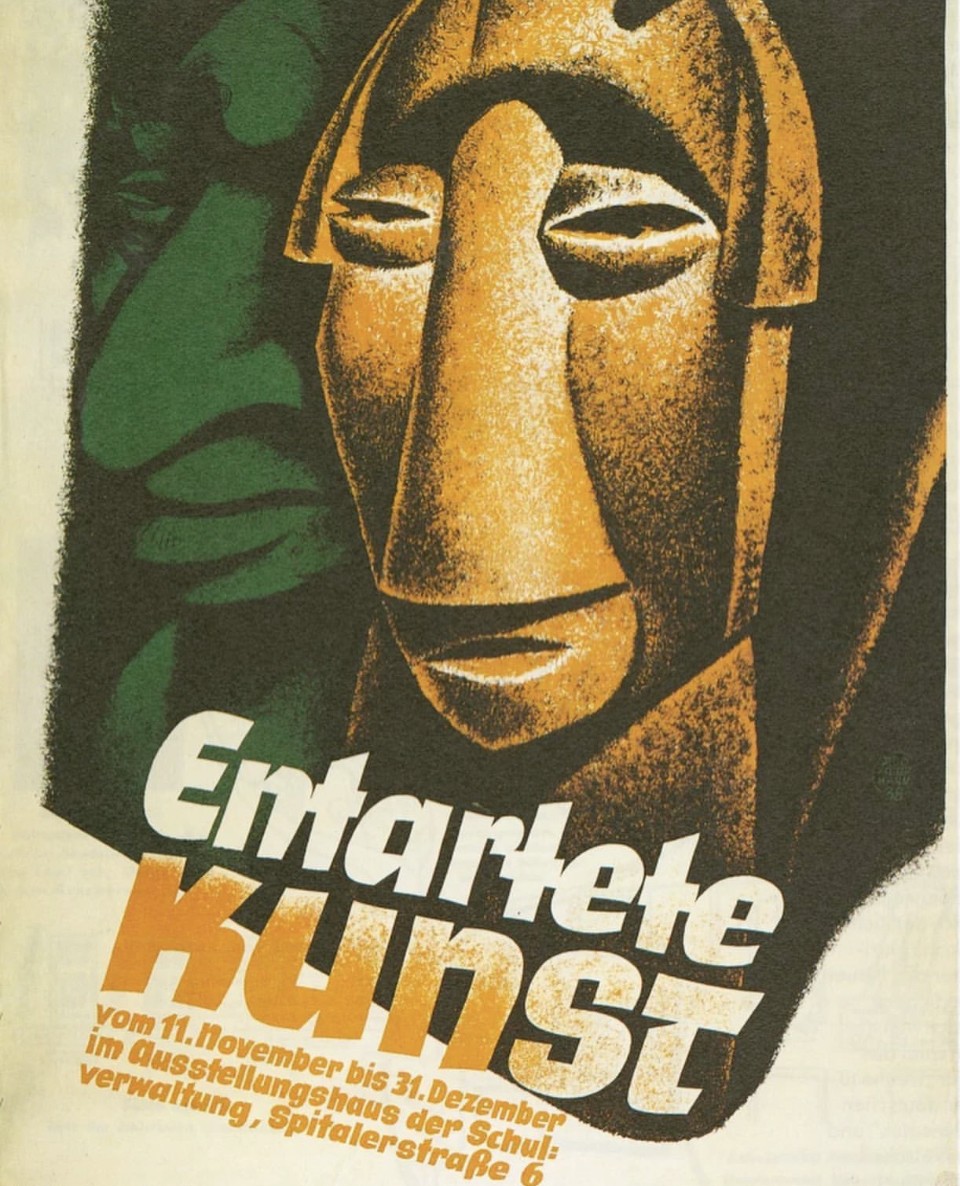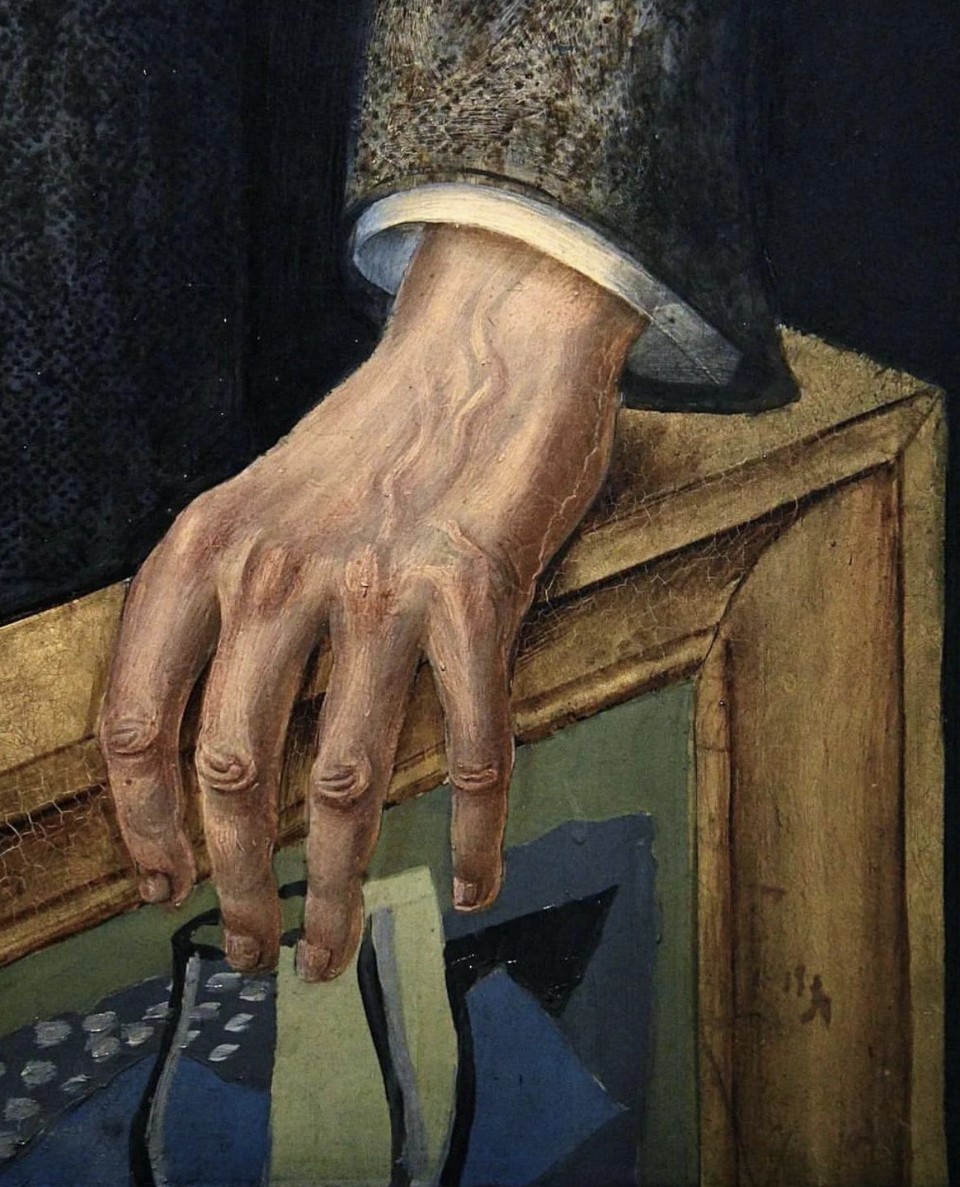Alfred Flechtheim & Otto Dix
During the 1920s, Alfred Flechtheim established himself as the foremost dealer of modern art in Germany, specializing in the French avant-garde as well as Germany Expressionism. Legendary parties in Flechtheim's gallery overflowed with the glitterati of the new Berlin.
When Nazis came to power in 1933, he was persecuted and his business attacked, both as a Jew and for his favoring of modern artists described as degenerate (‘Entartete Kunst’) by Hitler. His gallery was confiscated and his private collection was sold off. He fled to Paris and then to London. He wrote to Alfred Barr of the Museum of Modern Art in New York, informing him that, ‘I lost all my money and all my pictures.’
In March, 1937, Flechtheim slipped on ice and developed sepsis after puncturing his leg on a rusty nail in his hospital bed. He died at the age of 57. Tragically his wife chose in 1941 to return to Berlin to look after her aging parents. She killed herself after being ordered for deportation to the Concentration camps.
In 1937, Flechtheim’s Semitic features appeared on the poster for the Denerate Art show curated by the Nazis. The exhibition denounced modern art as the work of the insane and the corrupted and supposedly part of a Jewish-Bolshevist conspiracy to pollute the German people.
Interestingly Otto Dix had a sanguine view of Flechtheim according to his catalogue raisonne’ : “In his unflattering, uncommissioned work by Dix, he is surrounded by Cubist works. To Dix, he’s little more than a salesman in a cheap suit hawking foreign merchandise for the local bourgeoisie.”

